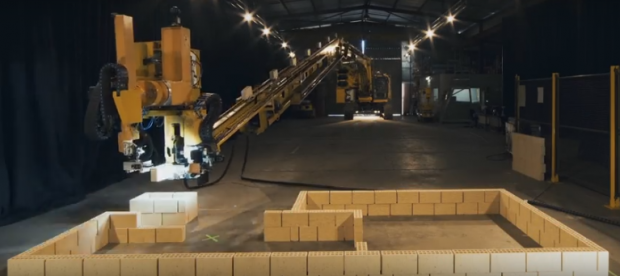
Breaking News
 $26M Frozen on Blockchain - With One Click
$26M Frozen on Blockchain - With One Click
 Italy are on national strike shutdown rejecting digital enslavement...
Italy are on national strike shutdown rejecting digital enslavement...
 The following U.S. states are currently using the rebranded "Reporty Homeland Security" so
The following U.S. states are currently using the rebranded "Reporty Homeland Security" so
 NATO Chief Urges Europe To Prepare For Long-Term World War With Russia, China, Iran & North Korea
NATO Chief Urges Europe To Prepare For Long-Term World War With Russia, China, Iran & North Korea
Top Tech News
 HUGE 32kWh LiFePO4 DIY Battery w/ 628Ah Cells! 90 Minute Build
HUGE 32kWh LiFePO4 DIY Battery w/ 628Ah Cells! 90 Minute Build
 What Has Bitcoin Become 17 Years After Satoshi Nakamoto Published The Whitepaper?
What Has Bitcoin Become 17 Years After Satoshi Nakamoto Published The Whitepaper?
 Japan just injected artificial blood into a human. No blood type needed. No refrigeration.
Japan just injected artificial blood into a human. No blood type needed. No refrigeration.
 The 6 Best LLM Tools To Run Models Locally
The 6 Best LLM Tools To Run Models Locally
 Testing My First Sodium-Ion Solar Battery
Testing My First Sodium-Ion Solar Battery
 A man once paralyzed from the waist down now stands on his own, not with machines or wires,...
A man once paralyzed from the waist down now stands on his own, not with machines or wires,...
 Review: Thumb-sized thermal camera turns your phone into a smart tool
Review: Thumb-sized thermal camera turns your phone into a smart tool
 Army To Bring Nuclear Microreactors To Its Bases By 2028
Army To Bring Nuclear Microreactors To Its Bases By 2028
 Nissan Says It's On Track For Solid-State Batteries That Double EV Range By 2028
Nissan Says It's On Track For Solid-State Batteries That Double EV Range By 2028
Goodbye Bricklayers, Hello Fastbrick Robotics

Construction workers world-wide, especially brick-layers, are in for a rude shock as their jobs will virtually disappear in the next 10 years. Fastbrick can lay perfect stacks of bricks in 1/4 the time it takes a skilled mason. ? TN Editor
In the year 122, the Roman emperor Hadrian began building a stone wall that would eventually stretch more than 70 miles across Northern England. Constructed as a defensive fortification around the Roman-controlled province of Britannia, the wall took about six years to build; parts of it still stand and are a popular tourist attraction in England today.
Today, Hadrian's namesake is building walls at a much faster rate – much faster than any human can, in fact. Hadrian 105 is a robot developed by Australian company Fastbrick Robotics, and it's capable of laying bricks at a rate of 225 bricks per hour. For a human to lay that many bricks, it would take about half a day – and the Hadrian 105 is just a precursor for a much larger and faster robot to be named Hadrian X, which Fastbrick Robotics is currently working on.
The company describes the robots as "3D automated robotic bricklaying technology." It's not exactly the same as most 3D printing techniques we're used to seeing, as the bricks are already made – no raw materials are being extruded or sintered. It does meet the definition of additive manufacturing, though, as material is being deposited, one layer at a time, following a computer aided design.

 Carbon based computers that run on iron
Carbon based computers that run on iron

